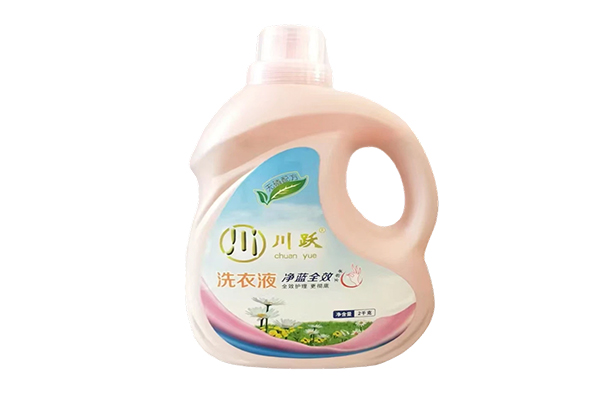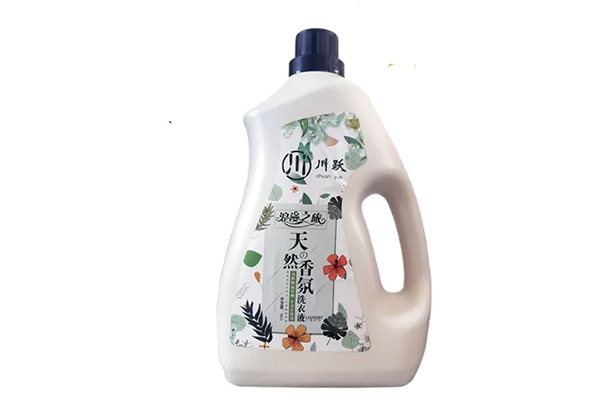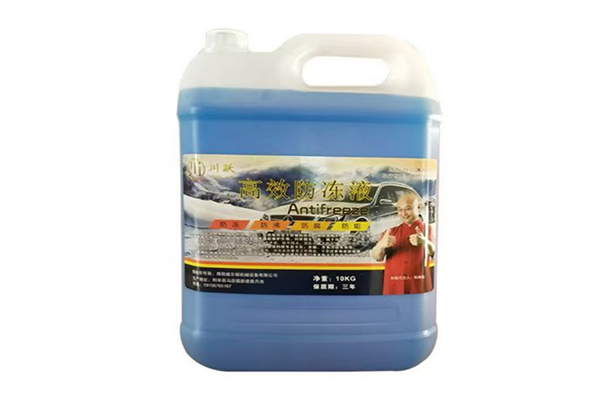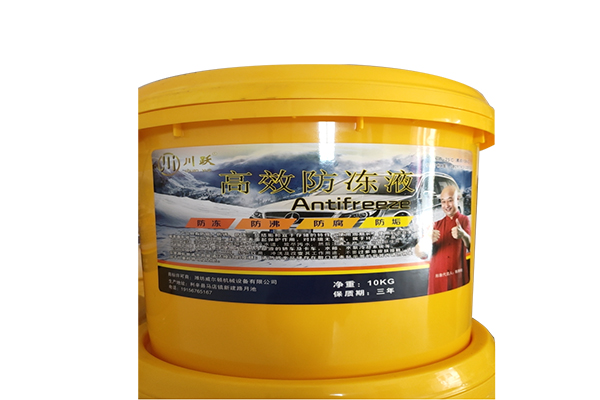How does the anti-foaming properties of high efficiency antifreeze affect the circulating pressure stability of the cooling system?
Release Time : 2025-09-01
The anti-foaming properties of high-efficiency antifreeze are a key performance factor in ensuring stable circulating pressure in the cooling system. Their core function is to suppress or eliminate bubbles generated during the antifreeze circulation process, preventing them from disrupting system pressure balance and, in turn, affecting cooling efficiency and component safety. When the cooling system is operating normally, a water pump drives the antifreeze through components such as the engine water jacket, radiator, and thermostat at high speed. Simultaneously, a pressure cap maintains a certain positive pressure (typically 0.8-1.2 bar) in the system, raising the antifreeze's boiling point (typically 108-115°C) and preventing it from boiling over at high temperatures. However, if the high-efficiency antifreeze's anti-foaming properties are insufficient, a large number of bubbles can easily form during circulation. These bubbles can disrupt system pressure stability in multiple ways, leading to a series of problems.
First, the compressibility of bubbles differs fundamentally from the incompressibility of high-efficiency antifreeze, directly leading to disrupted system pressure transmission. When air bubbles enter the high-efficiency antifreeze system, the pressure generated by the water pump's rotation cannot be efficiently transmitted throughout the entire circulation pipeline. At the pump's discharge end, the bubbles are compressed by the increased pressure, causing the actual output pressure to fall below the designed value. At the suction end, the bubbles may expand due to the reduced pressure, even creating a localized negative pressure, leading to cavitation in the pump. Cavitation not only produces high-frequency noise but also causes dramatic fluctuations in the pump's inlet and outlet pressures, disrupting the previously stable circulation pressure curve. This results in system pressure fluctuating rapidly, unable to remain within the specified safety range. For example, when the engine is operating at high load, the water pump's speed increases, increasing turbulence. If the anti-foaming properties are poor, bubble generation can significantly increase. Pressure fluctuations can potentially increase from the normal ±0.1 bar to over ±0.3 bar, directly affecting the proper opening and closing of the thermostat and further disrupting the circulation rhythm.
Secondly, the accumulation and movement of air bubbles within the pipeline creates "air lock," hindering the high-efficiency antifreeze cycle and indirectly leading to uneven system pressure distribution. Cooling system piping (especially the microchannels within the radiator and the narrow slits in the engine water jacket) must be designed to accommodate the fluid's flow characteristics. However, air bubbles can occupy the effective flow area of the piping, reducing the actual flow rate of the high-efficiency antifreeze. When the flow rate is insufficient, the radiator's cooling efficiency decreases, the engine water jacket's temperature rises locally, and the high-efficiency antifreeze in the hot areas expands due to the heat, creating localized high pressure. Simultaneously, the pressure in the low-temperature areas is relatively low due to insufficient flow. This "local high-pressure-local low-pressure" discrepancy further widens, disrupting the overall system pressure balance. More seriously, if air bubbles accumulate at the top of the radiator or at high points in the piping, forming an "air lock," they can completely block the flow of antifreeze. The water pump continues to operate but is unable to circulate the fluid. Pressure at the pressure end can rise sharply, potentially exceeding the pressure relief threshold of the pressure cap, causing antifreeze to overflow from the pressure relief valve. Once the air lock ruptures, the pressure drops sharply, creating a "pressure shock." Long-term effects of this condition can accelerate the aging and leakage of components such as pipe connections and gaskets, further deteriorating pressure stability.
Furthermore, the oxygen in the bubbles can exacerbate corrosion and scaling of metal components in the cooling system, indirectly undermining the foundation for stable pressure. High-efficiency antifreeze often contains corrosion inhibitors (such as silicates and molybdates) to protect metal components like cast iron, aluminum, and copper. However, the oxygen in the bubbles consumes the inhibitors and oxidizes with the metal, producing corrosion products such as iron and aluminum rust. These corrosion products adhere to the water pump impeller and radiator pipe walls, increasing flow resistance, increasing pump load, and destabilizing pressure output. Furthermore, the scale formed by the detached corrosion products can clog the pipes, increasing local flow velocity and pressure, creating new pressure differentials. For example, if scaling forms on the inner wall of an aluminum radiator due to corrosion, the cross-sectional area of the microchannels can decrease by over 30%, increasing the antifreeze flow rate from 1.5 m/s to 2.2 m/s and the local pressure by 0.3-0.5 bar. The pressure in other unobstructed pipes remains relatively low, further increasing the uneven pressure distribution in the system.
Furthermore, insufficient anti-foaming properties can affect the pressure cap's proper pressure relief function, further amplifying the risk of pressure fluctuations. The core function of the pressure cap is to release excess pressure through the pressure relief valve when system pressure exceeds the set value; and to draw air in through the vacuum valve to maintain system pressure balance when the temperature drops and the pressure decreases. However, if there are too many bubbles in the antifreeze, they will flow with the antifreeze to the pressure cap. When the pressure relief valve opens, the bubbles, not the liquid, are discharged first, resulting in insufficient pressure relief and keeping the system pressure above the safe level. Furthermore, as the system cools, the bubbles contract, creating a localized negative pressure. The vacuum valve opens prematurely, drawing air in, and the system pressure drops below the designed value. This "incomplete pressure relief and premature air intake" problem can render the pressure cap's regulatory function ineffective, preventing the system pressure from stabilizing within the optimal range to ensure boiling point. This not only easily causes boiling but also increases pressure fluctuations, creating a vicious cycle of "increased bubbles → unstable pressure → boiling → more bubbles."
Conversely, high-efficiency antifreeze, which boasts excellent anti-foaming properties, inhibits bubble formation and stabilization by adding specialized antifoaming agents (such as polyethers and silicone compounds). These agents reduce the surface tension of the high-efficiency antifreeze, allowing tiny bubbles generated during circulation to quickly coalesce and rise to the surface, where they are expelled through the exhaust valve at a high point in the system, preventing bubbles from becoming trapped in the pipes. At this point, the antifreeze circulates in a nearly pure liquid state, ensuring efficient pressure transmission from the water pump and stable flow within the pipes. The pressure cap accurately responds to system pressure changes, ensuring that the entire cooling system's pressure remains within the designed range. This not only safeguards the antifreeze's high-temperature stability but also prevents pressure fluctuations from damaging components like the water pump, radiator, and seals, providing fundamental support for long-term, stable engine operation.







